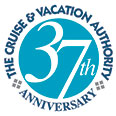The 10 Hidden Costs of Cruising -- and How to Fight Back
by Carolyn Spencer Brown
You have probably heard the term "all-inclusive" applied to cruises every so often. Sure, a voyage at sea is one of the best values around, because all major expenses (lodging, meals, snacks, activities and entertainment) are included. However, there are some items -- mostly of a personal or optional nature -- that are out-of-pocket expenses. And, those extra purchases can quickly run up your bill on a supposedly "all-inclusive" cruise.
Cruise lines are tempting travelers to come onboard with their ships' expansive spas, diverse specialty dining options and concept bars and lounges. But, if you want a massage, a fruity cocktail or dinner outside the main dining room or buffet, you'll need to hand over your cruise card and pay up at the end of the trip. You'll be paying extra, too, for onshore adventures arranged through the ship, Internet usage and souvenirs bought in onboard boutiques. And, when you're on vacation and hoping to live it up a little, it's hard to say no to that formal night photo or snorkeling excursion.
So, be sure to set aside some cash to cover these expenditures, or make a vacation budget, and stick to it. To make sure the incidentals don't break the bank for you, here are 10 things that will cost you extra onboard -- and how to find discounts and savings.
1. Shore Excursions
What You'll Pay: Cruise lines sell shore excursions, so you can make the most of your time in port, but they do inflate prices above what the actual tour operators charge. You can find details and pricing in the line's shore tour booklet, on its Web site or at the shore excursions desk onboard. Prices for these excursions range from about $25 for a quick city and shopping tour to more than $200 for some all-day tours, overland programs including meals and snacks, and such over-the-top offerings as helicopter flight-seeing and hot-air ballooning. Most tours are priced somewhere between $50 and $150, depending on length and activities involved.
Savings Tip: While you may wish to sign up for some of the ship's tours (particularly if you're not familiar with the port and do not speak the language), you also have the option to tour independently at a fraction of the cost -- or even for free, if you go on a self-guided walking tour. Before setting sail, request free planners with maps, calendars of events and attraction brochures for the ports of call on your itinerary from tourist boards. Check out books on your destination from the public library, and visit Web sites such as this one, particularly our Ports section, to get ideas on things to see. Local festivals and craft displays can be sources of good, free entertainment. Parks, beaches and art galleries showcasing local work are other free or nominal-charge attractions to check out. Or, perhaps you prefer to simply wander through town, browsing in shops and stopping for a coffee or snack. If you decide to hire a car and driver to give you a private tour (generally less expensive than the shipboard excursions, especially if you have a group) or just to take you to the center of town, always agree on the price (and, in the case of a tour, which specific points of interest will be covered) before you get into the car.
2. Alternative Dining
What You'll Pay: While meals in the ship's main dining room and buffet venue are typically included in the cost, cruise lines have been adding numerous for-fee venues to their ships. You can pay anywhere from a few dollars for an ice cream cone at an onboard Ben & Jerry's or gelateria to $35 for a meal in a specialty dining venue or a whopping $75 for an exclusive Chef's Table experience or at Disney Cruise Line's Michelin-chef-helmed French restaurant, Remy. Many European lines charge a la carte prices in their alternative venues.
Savings Tip: Don't go! You can typically find 24/7 dining for free onboard, and main dining room meals are often quite good with multiple courses and decadent desserts -- and there's always room service. If you're tempted by the specialty options, just be sure to budget the price of dinner into your onboard spending (or skip those afternoon cocktails or wine with dinner to mitigate the cost). Some lines, including NCL, occasionally offer early-bird two-for-one dining specials at their for-fee restaurants for passengers who are willing to eat at 5 p.m. Or, look for cruise deals that offer onboard credit or free meals in specialty venues as part of the incentive package to book.
3. Alcohol and Other Beverages
What You'll Pay: Alcoholic beverages and wine are not included in the cruise fares on most lines (with the exception of some ultra-deluxe lines). Plus, many will also charge for soda, bottled water, certain juices and specialty coffees. Your drink tab can quickly add up: You'll be paying restaurant, not grocery store, prices for your beverages.
Savings Tip: Most vessels advertise discounted "daily drink specials" you may want to try -- or check out two-for-one martini specials during happy hour on some ships. And if you're ever offered a drink in a souvenir glass that you won't be taking home, ask for the price in a regular glass. It may save you a couple of bucks. Look for events with free booze, such as Champagne art auctions or Captain's cocktail parties. At meals, iced tea, milk, coffee and juices are complimentary. Plus, you can always order a bottle of wine and save whatever you don't finish for the next night, which can be cheaper than always ordering wine by the glass. Some lines have beer and wine packages, but you need to make sure you drink enough to actually save. If you chug soda, find out if your ship offers soda packages that feature unlimited sodas during the cruise. Or, bring your own. We pick up soda six-packs and bottled water in port. Be forewarned, though: Cruise line policies on bringing alcohol onboard are highly restricted.
4. Spa and Salon Treatments
What You'll Pay: Cruise line spas charge rates equal to high-end salons, and you may be shocked by the prices. A massage is typically about $110 to $150, with more exotic treatments running into the $200 to $500 range. Passes to thermal suites and thalassotherapy pools average $15 to $30 per day, with cruiselong packages also available. Plus, beware of the sales pitches: Most shipboard spas are operated by Steiner's of London, and the staff, who work on commission, often give you the hard sell to persuade you to buy several of their pricey products.
Savings Tip: Take advantage of spa discounts, typically offered on embarkation and port days. And, check your ship's daily program for spa treatment specials that may be available one day only or during certain hours. Resist that product sales pitch. Or, be bold right up front -- and ask not to be bothered with sales pitches at all.
5. Onboard Activities
What You'll Pay: While many onboard activities are free, many special activities incur extra fees. Among those are fitness classes like Pilates, yoga and spinning ($10 to $15 per class); wine-tasting events; after-hours baby-sitting for the youngest children (about $6 per child, per hour); behind-the-scenes tours and casino play (as much as you're willing to lose).
Savings Tip: You can certainly keep entertained with free activities. Attend the production shows, live music performances, cooking demos, pool or trivia games and free lectures -- or simply spend your time chilling by the pool, reading a book or chatting with your traveling companions. If you're intrigued by the for-fee activities, set a budget, and choose which ones are most interesting.
6. Laundry
What You'll Pay: As at land-based resorts, laundry and dry-cleaning charges on a cruise can be steep (approximately $2.50 to $3.50 to wash a T-shirt, for instance). Check to see if there is a self-service launderette, and use it. (Typically, washing and drying one load of clothes comes to between $2 and $4).
Savings Tip: You have two options here: pack enough changes of clothes for the cruise, and do the wash back home, or bring your own travel-sized detergent, wash necessities in your cabin sink, and hang-dry them in the shower.
7. Tipping
What You'll Pay: Tipping policies vary by line; many recommend about $10 to $12 per person, per day, to be distributed among those who provide key services -- dining room waiters, assistant waiters and cabin stewards. If you have butler service, be prepared to tip extra. Additionally, bar tabs are automatically charged a 15 percent gratuity. When the maitre d' performs a special service, such as arranging for a birthday cake to be brought to the table, he should be tipped, as well. U.K. travelers will find that tips are typically built into the cruise fares, though, of course, you can give tips for exceptional service.
Savings Tip: Generally, tipping is not an area where you can save money. You can adjust the auto-gratuities at the ship's purser's desk or choose to tip below the recommended amount if you feel you've received subpar service. However, I discourage this in most cases. The ship's crewmembers -- particularly the waiters, assistant waiters and cabin stewards -- work hard and depend on tips to round out their salaries. Unless the service has been extremely poor, tip the recommended amount or add a little more, if you can, for outstanding attention.
8. Souvenir Shopping Onboard and in Port
What You'll Pay: Most people purchase something to remember their cruises, and it may take a lot of willpower to pass up on the beautiful -- and expensive -- figurines, perfumes, designer fashions and leather goods if your budget doesn't allow for them. Even tacky trinkets and T-shirts can add up if you're buying for your extended family-and-friend network. Prices can range from a $5 tee to a piece of jewelry valued in the hundreds or even thousands of dollars.
Savings Tip: Avoid temptation by not browsing in the boutiques onboard and ashore if you cannot afford to buy. If you do plan to purchase some souvenirs, check the prices of merchandise at stores back home, and bring pages of their sales catalogs for the particular items you're interested in to compare prices. (They may be cheaper at home.) Good, inexpensive souvenirs include handicrafts from outdoor markets and street vendors, and local products such as coffee, jellies and candy purchased at grocery stores in port, where souvenirs are, generally, less expensive. Typically, bargain tables appear on ships toward the end of a cruise, so wait for the latter portion to buy onboard if you're so inclined.
9. Photos and Camera Equipment
What You'll Pay: Cruise travelers are often lured into dropping big bucks at the onboard photo gallery, where an 8x10 photo can easily cost $20 or more. Buying additional batteries, memory cards and other camera supplies will not only cost you more money than they do back home, but will eat up precious vacation time, as well.
Savings Tip: If you're worried about blowing your budget on photos, just say no thanks when the ship's photographer asks to take your picture. Or, resist the urge to "just check out" the photo in the gallery -- once you see the printed version, you're more likely to want it. Take your own pictures, and rely sparingly, if at all, on the ship's photographers. On the equipment side, buy plenty of batteries and other camera supplies at home -- and bring more than you think you will need, just in case.
10. Internet
What You'll Pay: Whether you bring your own laptop and take advantage of shipboard Wi-Fi or park yourself at the computer center onboard, you will pay extremely high rates for often slow Internet connections. Most lines charge about 75 cents a minute for pay-as-you-go plans and offer packages that reduce the cost to around 55 cents a minute for buying Internet time in bulk.
Savings Tip: You can usually find cheaper Internet centers in port, if you don't mind using some of your onshore time to check your e-mail and surf the Web. Check Cruise Critic's port profiles for Internet cafes close to your ship. If you bring your own laptop, look for cafes and other establishments with free Wi-Fi.

With each issue of Ultimate Experiences Online, you’ll enjoy a collection of articles, slideshows and videos that we will inspire you to make your travel dreams a reality.

To help you discover ways to explore the world, we're pleased to share our The Travel Magazine Online.
 Save money and escape the crowds. Hot Deals and multi-port packages. Savings of up to 50%!
Save money and escape the crowds. Hot Deals and multi-port packages. Savings of up to 50%!

Our free app that allows you to carry all of the destination information you need while traveling, right in your pocket!

We recommend optional travel insurance that protects you in the event of having to cancel your trip avoiding travel vendor cancellation policies and more!





